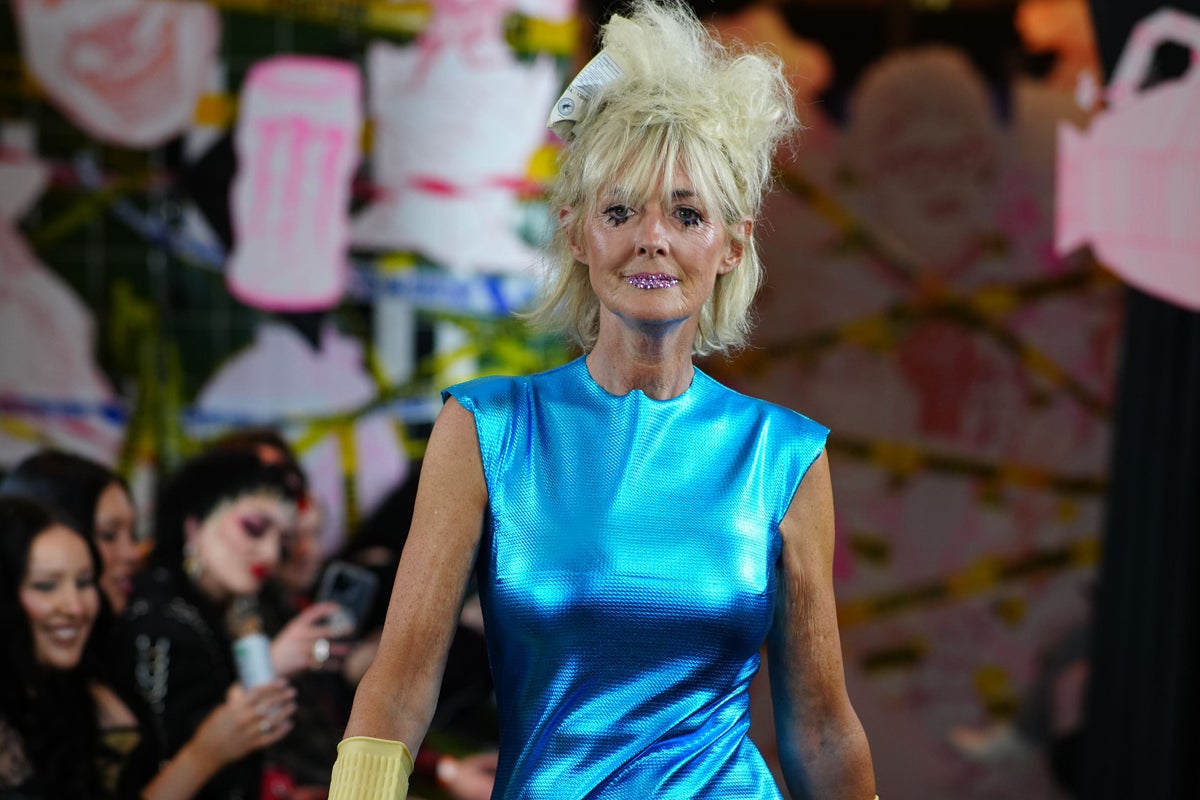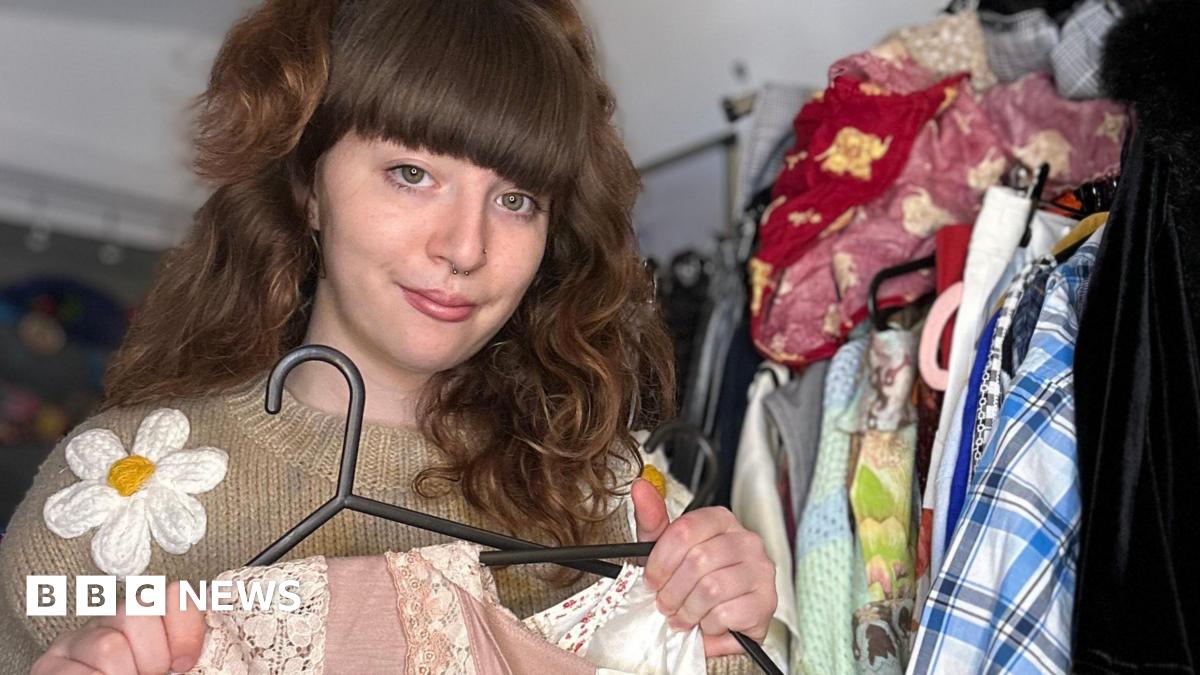Jane Moore appeared in a skin-tight electric blue dress with back-combed hair and sparkling lips at the Vin + Omi London Fashion Week show in Kensington.
When asked how the design duo were going to dress Moore before the show, Vin told the PA news agency: “Jane will be quite sexy and quite punk I think. We want to punk her up.”
Entitled KAOS, Vin and Omi’s autumn/winter 2025 show centred on what the designers deemed to be ‘chaotic sustainability’.
“Many years ago, (our collections) started off by focusing on one thing – like plastic,” said Vin, “but this season, every single thing we could think of has been recycled and turned into fabric or added to the garments.
“That’s what we mean by chaotic sustainability.”
Sustainability is at the core of Vin + Omi’s designs, and the catwalk featured a new fabric made entirely from recycled milk cartons from the King’s Sandringham estate.
“We took the milk cartons from the Sandringham visitor centre and developed it into a spongey-like material that looks like leather,” said Vin.
The nomadic design duo, although predominantly based in Norwich, have been collaborating with Charles to develop sustainable fabrics since 2019.
Moore, 62, was joined on the runway by The Great British Bake Off’s Dame Prue Leith, 85, who evoked a 1980s punk princess, wearing a coat dress made out of the recycled fabric.
Having appeared on the runway for the designers’ last collection wearing a tight latex dress, Dame Prue was happy to walk again, as Vin declared, “Prue’s addicted to recycling.
“She flew back from Australia getting in at 5am this morning to do (this show).”
Dame Prue and Moore were not the only stand-out stars of the show.
“The youngest model to go on the catwalk is the embryo inside the pregnant woman, who is due in two weeks,” said Vin.
While pregnant models have taken to the fashion week catwalks before (such as Jourdan Dunn at Jean Paul Gaultier’s 2010 show) – this may be a London Fashion Week first that a pregnant model has walked due “any day now”.
The pregnant model appeared in low-rise midi skirt and crop top with the definitive KAOS collection print emblazoned across the ensemble.
Inspired by Instagram’s algorithm, the show drew on the themes that pepper our daily social media feeds; from fashion and aspirational style to political campaigning.
Disfigured teddy bears and dolls accessorised some ensembles, perhaps hinting at how social media is sometimes seen as having the ability to corrupt some young minds.
The soundtrack was suitably chaotic, beginning with The Sun Will Come Out Tomorrow from the musical Annie, kickstarting a sense of hope and optimism.
However, soon sounds of smashed porcelain, gunshots and excerpts of political speeches from Martin Luther King Jr to Donald Trump impeded the tranquil soundtrack, mimicking the fractured and erratic Instagram algorithm.
Intricately ruffled gowns adorned with cigarette packets and sweet wrappers flooded the runway. The eco-design duo presented a couture collection that was seemingly dragged through a dumpster moments before stepping onto the catwalk.
Rubbish was plastered to the faces of perfectly made-up models, mirroring the good and bad sides of social media.
Eveningwear mixed overtly feminine Disney princesses with the modern day ‘brat’ girl. It was a beautifully messy show.
X-ray scans of exotic animals were printed onto garments – perhaps a nod to London Fashion Week’s recent sustainability initiative of banning all exotic skins and furs in collections.
Red text reading ‘NOT DEAD YET’ accompanied each image.
Sustainability went beyond the garments made out of recycled fabrics.
The models’ jewellery included medallions made out of broken ceramic plates which hung around their necks. The broken porcelain was sourced from the waste of the very hotel, The Other House, that the show was performing in.
The milk carton fabric formed a leather-like textile, offering a perfect vegan and sustainable alternative to animal-based outerwear, with which the design duo hope to inspire the industry.
Recycled neoprene fabric also appeared in the collection, with utilitarian dresses made from discarded wetsuits sourced from Team GB, The Royal Navy and UK surf schools.
“(The collection) had to have elements of survival, positivity and fun as well,” said Vin. “It’s quite hard marrying all of that together. So it become chaos.”
“We wanted to show the fashion industry that you can turn more than you think into fabric,” said Vin.
“It’s about changing people’s perceptions of what you can wear, and that you should choose your fabrics carefully.”
“We’ve always said that our ideas are to be stolen,” said Omi. “That’s the whole point of why we do what we do.”













